A continuation of “On Things Domestic:”
A few years ago I adopted an adult cat, Catty Arbuckle. So named because of his deafness and because of the love of film I share with my ex-boyfriend (see “Fatty Arbuckle”) who helped me pick Catty up from the local animal shelter. He’s been a great cat: easy-going, people-loving. And he loves the RV. He is perhaps happier now than he ever was in my apartment. I think this might be because of the varied surfaces he can perch on and the fact that we are together a lot more now that I’m not running to an office for most of the day. And though most cats have issues with traveling in a car he’s totally at ease when we’re on the go.
I think Catty’s inability to hear is a huge benefit to him as an RV cat. All the shaking and rattling that comes with driving a house down the highway would freak any pet out. Pots and pans dancing in the cabinets, the occasional falling item or opening drawer, drinks jangling inside the refrigerator – Catty hears none of it. Which means that I’m usually more on edge than he is when we’re pulling out of our parking spot and the worst of the settling has begun.
Not only is he relaxed, he has a routine. When we pull out, items stowed and Yair and I sitting in the cab, Catty visits his litter box, eats and drinks, and climbs up into bed where he usually naps or watches through the window as we make it to our next destination. He’s made for this.
Catty is also a furry mess. And any mess is so much more apparent when you live in a small space. I try to furminate him regularly to cut down on hair issues and I keep his food and water bowls inside a larger dish to catch any spills. The biggest problem is, of course, the litter box. Thankfully, before we left Austin I found inspiration via the web to install a hidden box beneath one of the dinette’s bench seats. This has worked beautifully and certainly improved our lives. I can’t imagine keeping the box in the shower like so many RVers do and highly recommend that anyone thinking of traveling with their cat take steps to hide the box. It was surprisingly easy and I was able to install the whole thing in an afternoon.
For this I bought a small plastic litter box ~$3, and a piece of composite wood board ~$5. I measured the space needed for the box and cut the board to fit the space in order to make a wall between the cat box area and the rest of the storage area, containing litter and leaving about a one inch gap at the top for ventilation. The board was secured in place with wood glue and a few small nails.
To make the cat door I simply cut through the thin wall with a box cutter. Later I added a piece of fabric to act as a flap, currently held in place with magnets.
That’s really all that was required to make a hidden cat box. I also added a floor liner, made quickly out of some oil cloth, which helps collect spilled litter. The only downside is that you have to remove the seat cushions to access the box for cleaning.
Quick update on our location: I’m back from New York and, after a few days in South Lake Tahoe, Yair and I headed back to Travertine Hot Springs for a few days. More details to come…

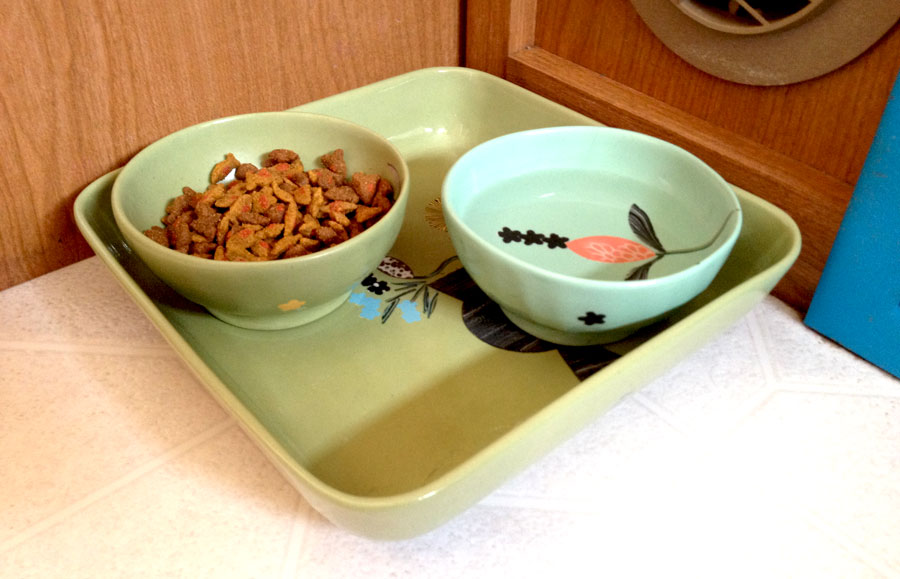
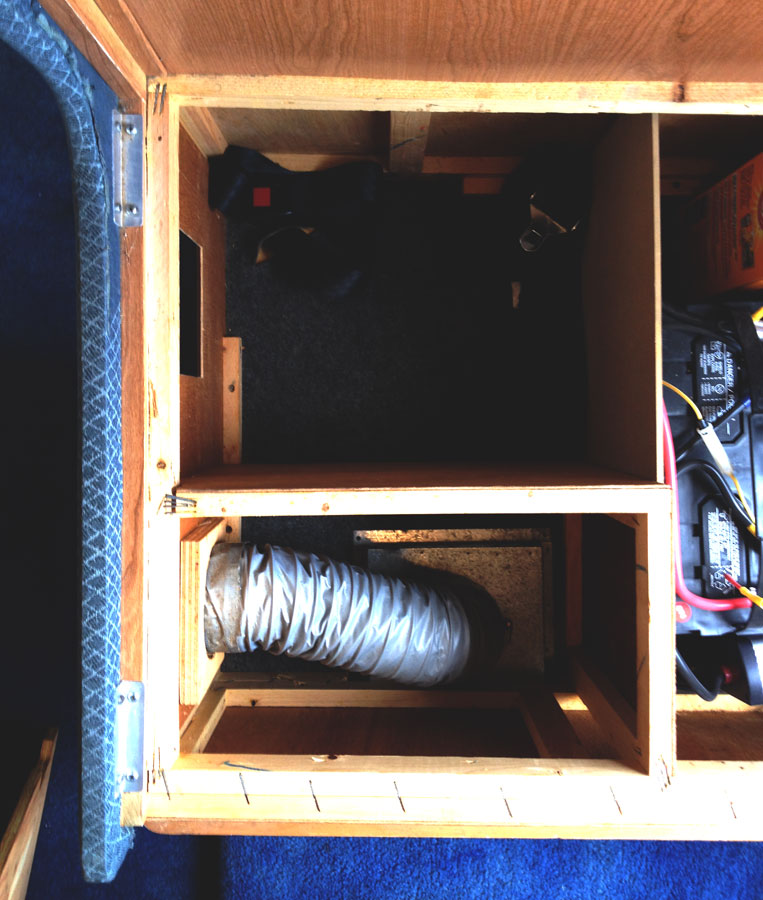
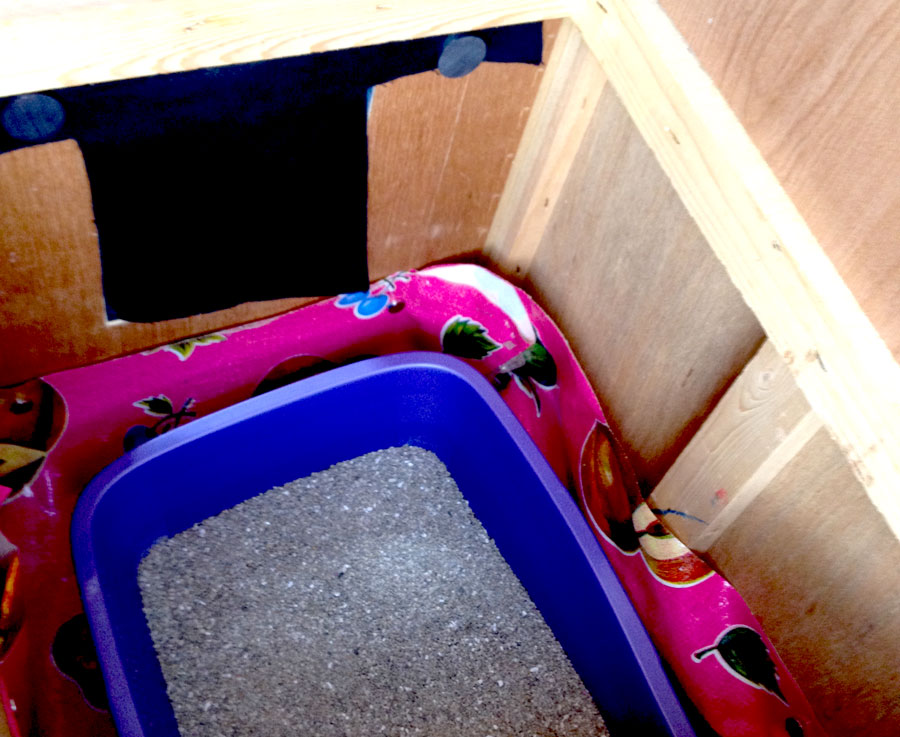
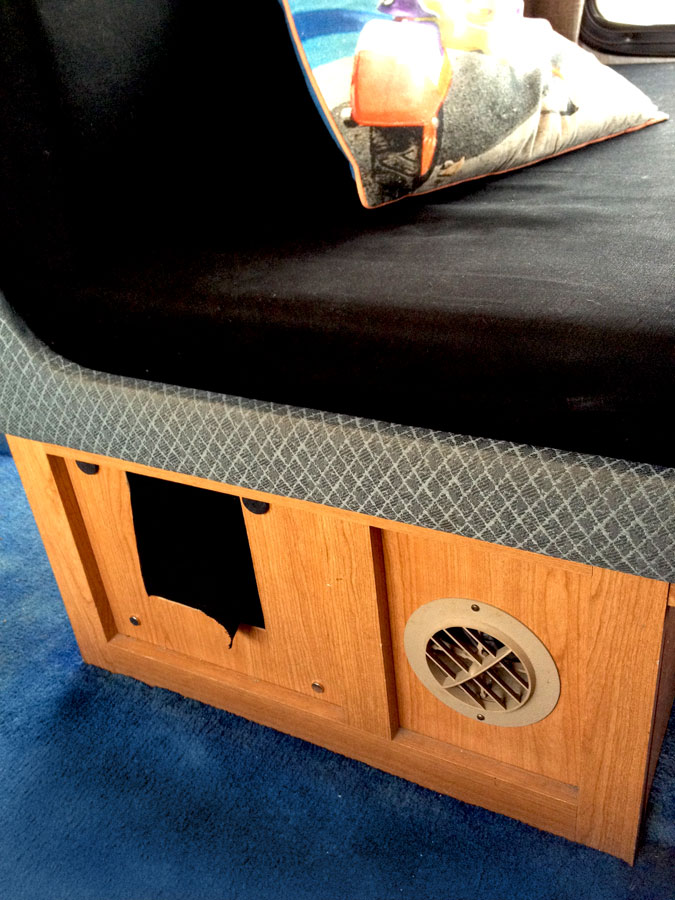
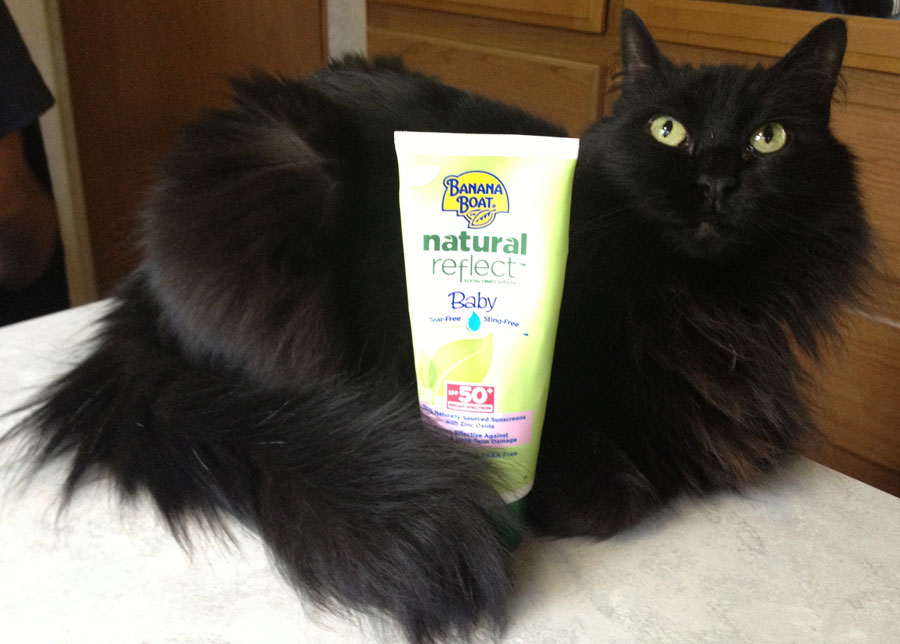
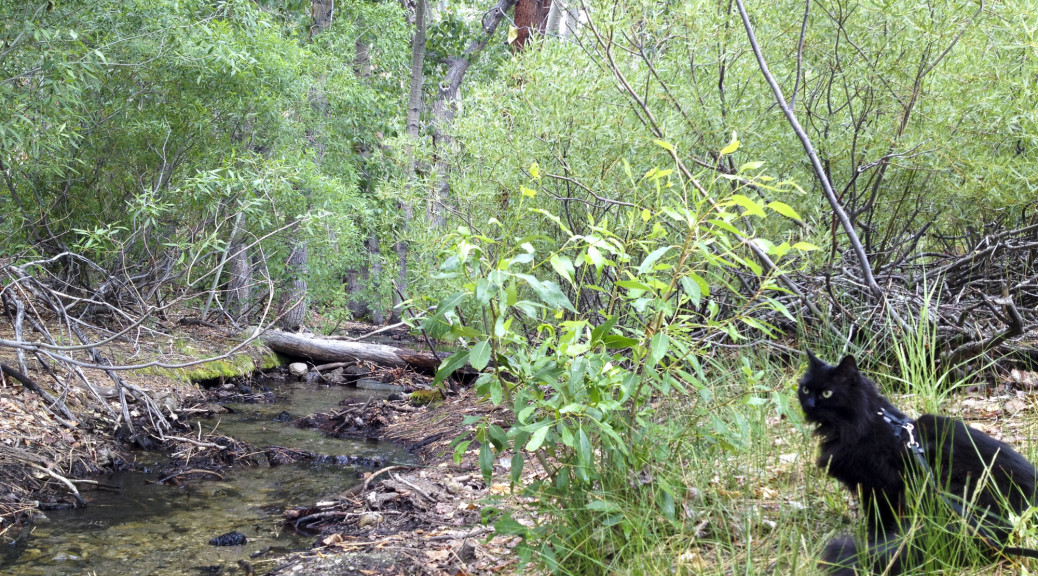
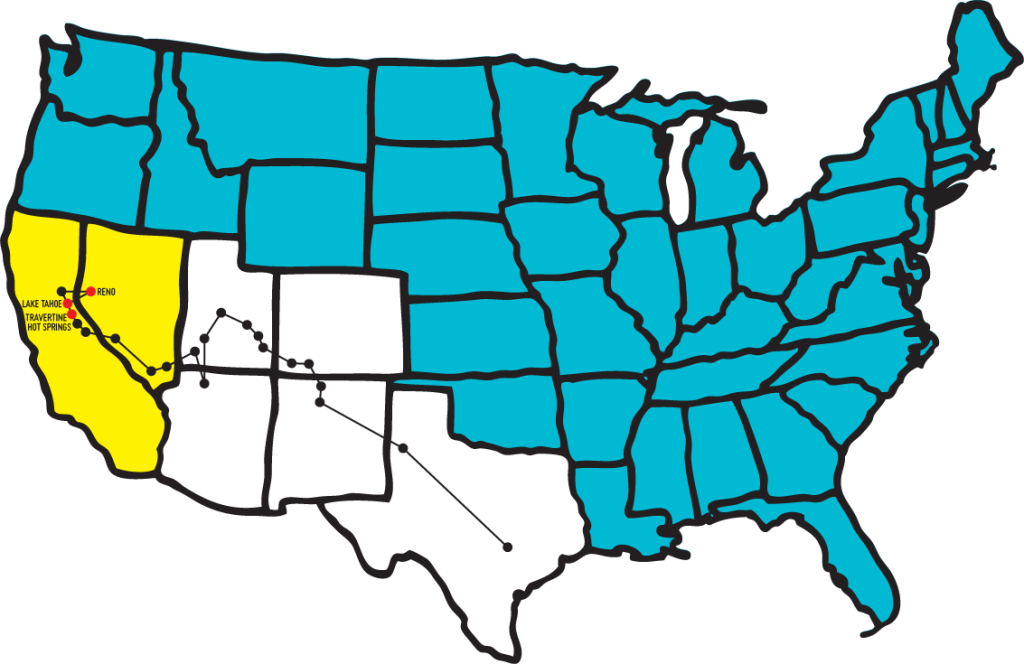
You did a really good job on the box, servant.
-The Pirate, Catty Arrrrbuckle